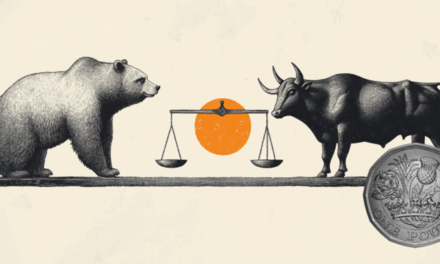- GBP/JPY slips toward 199.50 after failing to sustain gains above 200.00, as strong Japan GDP revives Yen demand.
- Japan’s Q2 GDP and sticky inflation fuel BoJ tightening bets, with markets eyeing a potential October rate hike.
- Reuters poll expects Japan’s core CPI to rise 3.0% in July, down from 3.3% in June.
The GBP/JPY cross is edging lower on Friday, with the cross weakening toward the 199.50 handle after briefly touching the 200.00 psychological level on Thursday. The move snaps a short-lived recovery from the previous day as investors react to surprisingly strong Japanese Gross Domestic Product (GDP) data and rising expectations that the Bank of Japan (BoJ) may shift toward policy tightening in the coming months, lending fresh support to the Yen.
Japan’s preliminary Q2 GDP data painted a much stronger growth picture than expected. The economy expanded by 1.0% on an annualized basis, handily beating forecasts of 0.4% and a prior reading of 0.6%. On a quarterly basis, GDP rose 0.3% QoQ, also topping expectations of 0.1%.
While the GDP Deflator — a key measure of inflation — eased to 3.0% YoY, slightly below both the prior reading of 3.3% and the consensus forecast of 3.1%.
Adding to the bullish Yen narrative, a Reuters poll of 20 economists released Friday showed that Japan’s core Consumer Price Index (CPI) is expected to have risen 3.0% YoY in July, easing from 3.3% in June.
Despite the slight cooling, the figure remains well above the BoJ’s 2% inflation target, reinforcing the view that underlying price pressures are persistent. Markets are increasingly pricing in the possibility of a rate hike as early as October.
In contrast, the British Pound remains somewhat cushioned after data released Thursday showed the UK economy grew 0.3% in Q2, beating consensus estimates of 0.1%. The resilience in construction and services helped offset post-election uncertainty and the drag from US-imposed tariffs.
Earlier this month, the Bank of England (BoE) delivered a 25 bps rate cut, lowering its Bank Rate to 4.00%. However, the stronger-than-expected GDP print may prompt policymakers to adopt a more patient easing approach. BoE Chief Economist Huw Pill recently noted that lingering inflation risks and internal divisions could slow the pace of further rate cuts, reinforcing the view that any additional policy loosening will proceed gradually and cautiously.
Bank of Japan FAQs
The Bank of Japan (BoJ) is the Japanese central bank, which sets monetary policy in the country. Its mandate is to issue banknotes and carry out currency and monetary control to ensure price stability, which means an inflation target of around 2%.
The Bank of Japan embarked in an ultra-loose monetary policy in 2013 in order to stimulate the economy and fuel inflation amid a low-inflationary environment. The bank’s policy is based on Quantitative and Qualitative Easing (QQE), or printing notes to buy assets such as government or corporate bonds to provide liquidity. In 2016, the bank doubled down on its strategy and further loosened policy by first introducing negative interest rates and then directly controlling the yield of its 10-year government bonds. In March 2024, the BoJ lifted interest rates, effectively retreating from the ultra-loose monetary policy stance.
The Bank’s massive stimulus caused the Yen to depreciate against its main currency peers. This process exacerbated in 2022 and 2023 due to an increasing policy divergence between the Bank of Japan and other main central banks, which opted to increase interest rates sharply to fight decades-high levels of inflation. The BoJ’s policy led to a widening differential with other currencies, dragging down the value of the Yen. This trend partly reversed in 2024, when the BoJ decided to abandon its ultra-loose policy stance.
A weaker Yen and the spike in global energy prices led to an increase in Japanese inflation, which exceeded the BoJ’s 2% target. The prospect of rising salaries in the country – a key element fuelling inflation – also contributed to the move.







